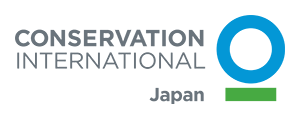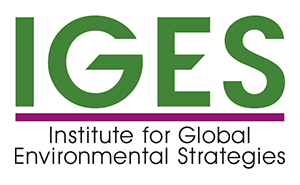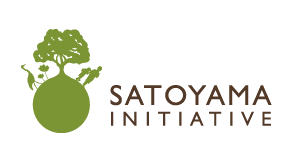About Us
The GEF-Satoyama Project was funded by the Global Environment Facility (GEF) and implemented by Conservation International’s CI-GEF Project Agency. The execution of the project was led by Conservation International Japan in cooperation with the United Nations University Institute for the Advanced Study of Sustainability (the Secretariat of the International Partnership for the Satoyama Initiative) and Institute for Global Environmental Strategies.
Global Environment Facility (GEF):

The Global Environment Facility (GEF) is an international partnership of 183 countries, international institutions, civil society organizations, and private sector to address global environmental issues. Serving as financial mechanism for several international environmental conventions, since 1991, the GEF has provided $14.6 billion in grants and leveraged $74.3 billion in co-financing for more than 4,000 projects in more than 165 developing countries. (www.thegef.org)
Conservation International Japan (CI Japan):

CI Japan is a Japanese entity and part of an international NGO, Conservation International, working for realizing sustainable society. Based on a strong foundation of science, partnership and field demonstrations, CI Japan works closely with the network spreading in 31 countries with a total staff of 1000 conservationists. Under the slogan of “People need nature to thrive,” it engages in policy work, field project implementation and outreach.
United Nations University Institute for the Advanced Study of Sustainability (UNU-IAS):

UNU-IAS is a leading research and teaching institute based in Tokyo, Japan. Its mission is to advance efforts towards a more sustainable future, through policy-relevant research and capacity development focused on sustainability and its social, economic and environmental dimensions. UNU-IAS serves the international community, making valuable and innovative contributions to high-level policymaking and debates within the UN system. The activities of the institute are in three thematic areas: sustainable societies, natural capital and biodiversity, and global change and resilience. (ias.unu.edu)
Institute for Global Environmental Strategies (IGES)

IGES is a non-profit, research institute headquartered in Hayama, Japan with offices in Kansai, Kitakyushu and Tokyo, as well as in Bangkok, Thailand and Beijing, China. Information on IGES research, networks and events are available on the IGES website: www.iges.or.jp/en/
The International Partnership for the Satoyama Initiative (IPSI):

The Satoyama Initiative is a global effort, first proposed jointly by the United Nations University and the Ministry of the Environment of Japan (MOEJ), to realize “societies in harmony with nature” and contribute to biodiversity conservation through the revitalization and sustainable management of “socio-ecological production landscapes and seascapes” (SEPLS). The United Nations University Institute for the Advanced Study of Sustainability (UNU-IAS) serves as the Secretariat of IPSI, an international partnership of organizations working to realize the vision of the Satoyama Initiative. As of January 2016, the IPSI has 184 members from international organizations, national and local government, research and academic institutions, NGOs and private businesses. (satoyama-initiative.org/)
Messages
(from the press release on October 1, 2016)
Ms. Yoko Watanabe, Asia Regional Coordinator & Senior Biodiversity Specialist of the Global Environment Facility (GEF) says: “The GEF welcomes and is pleased to support this initiative to further the innovation in mainstreaming biodiversity at the landscapes and seascapes level with stakeholders that are engaged in agriculture, forestry, fisheries and other production sectors to ensure environment and social sustainability. Building on the works of related GEF projects and the International Partnership for the Satoyama Initiative, we hope that this project will contribute in addressing the drivers of biodiversity loss at key biodiversity areas in a gender and socially inclusive manner. It is also expected that it will further enhance collaboration and knowledge sharing among the wider stakeholders globally, including both public and private sectors.”
Mr. Yasushi Hibi, the Managing Director of CI Japan, also represent the Executive Team of the GEF-Satoyama Project says: “I am honored to be part of the first executing team by Japanese organizations for a GEF biodiversity project at this scale. Satoyama is important in realizing a healthy sustainable society that CI envisions. As the Indo-Burma region has a long tradition, especially in co-existing with freshwater ecosystems, I look forward to receiving proposals that can showcase the Satoyama concept.”
Dr. Kazuhiko Takemoto, Director, United Nations University Institute for the Advanced Study of Sustainability (UNU-IAS) says: “Since 2010, when the Satoyama Initiative was formally recognized by the Tenth Meeting of the Conference of the Parties to the Convention on Biological Diversity (CBD COP 10), UNU-IAS has undertaken a number of efforts to realize its vision of “societies in harmony with nature”. Among these has been serving as the Secretariat of the International Partnership for the Satoyama Initiative (IPSI), which has included fostering networking among the partnership’s members, collecting and disseminating case studies from around the world, and others. The new GEF-Satoyama Project is a major outcome of these efforts, and an excellent opportunity to upscale IPSI activities. We at UNU-IAS look forward to working closely with Conservation International Japan and IGES to further promote the Satoyama Initiative around the world.”
Mr. Keiji Nakajima, the Director of the Institute for Global Environmental Strategies (IGES) Tokyo Office says: “Amongst IGES’s contributions to IPSI and its collaborative activities, IGES has been supporting the Satoyama Development Mechanism (SDM) since 2013 in collaboration with UNU-IAS and the Ministry of the Environment of Japan, which provides seed funding to IPSI member organizations in several countries to promote their on-the-ground activities. Having seen the third year since its inauguration, SDM has started demonstrating good results and generating important knowledge that will further promote the Satoyama Initiative. We welcome the inception of the new global GEF-Satoyama Project firmly based upon the achievements of IPSI and its collaborative activities including SDM, and will further commit to the success of the new Project.”
Ms. Fumiko Nakao, Director, Global Biodiversity Strategy Office, Nature Conservation Bureau, Ministry of the Environment of Japan says: “The Ministry of the Environment of Japan, together with UNU-IAS, has been promoting the conservation and sustainable use of socio-ecological production landscapes and seascapes through the Satoyama Initiative since the CBD COP10 in 2010. Protecting biodiversity entails not only preserving pristine environments, such as wilderness, but also conserving human-influenced natural environments, such as farmlands and secondary forests, that people have developed and maintained sustainably over a long time. Satoyama initiative is promoting the sustainable use of natural resources in human-influenced natural environment (socio-ecological production landscapes and seascapes: SEPLS), which are formed by the interaction of human and nature. We congratulate the launch of the GEF-Satoyama Project, and look forward to its contribution to the scaling up of site-based activities of the Satoyama Initiative and to the achievement of the Aichi Biodiversity Targets.
